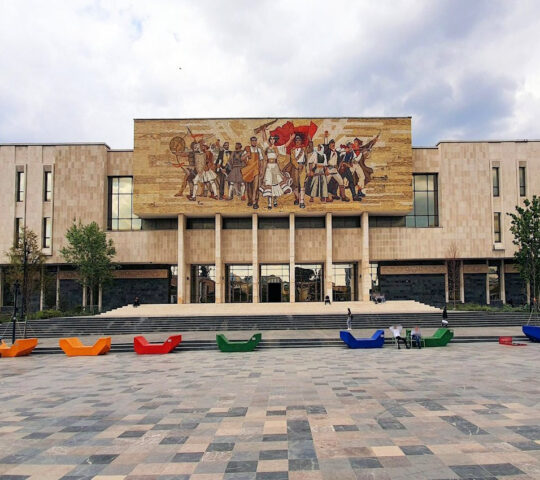Bunk Art 2
Singular museum of Albanian history inside a nuclear bunker dating back to the communist era.
The former anti-nuclear bunker of the Ministry of the Interior
The tunnel of the Ministry of Interior was built between 1981 and 1986 and can be considered as one of the last “great works” carried out by the communist regime within the bunkering project that started in the early 70’s and led to the construction of 175,000 bunkers of various sizes throughout the country. Bunkers were of three types of construction: hillside, building, and pit. The bunker of the Ministry of Interior is of the “pit” type: in fact, this was created by Construction Company 10 (a department of the Ministry of Construction that was engaged in the construction of secret bunkers) that dug a large pit near the building of the Ministry of Interior (Minister built in the 1930s according to the Italian project): after the realization of the interior, the structure in the upper part was made with a thick layer of reinforced concrete reaching a thickness of 240 cm (the thickness can be seen along the stairs of output).
This bunker, codenamed “Pillar Facility”, consists of 24 rooms, an apartment reserved for the Minister of the Interior and a large hall dedicated to telecommunications. Like many other bunkers of this size, this one was built to withstand a possible chemical or nuclear attack. In fact, the bunker was not even used for training. Both Prime Minister Mehmet Shehu and dictator Enver Hoxha, who ordered its construction, never saw it completed because they both died before the works were completed. The entrance and exit of the bunker were created only recently, since in the initial project the tunnel could only be entered from inside the Ministry.
https://goo.gl/maps/2Xf32KoE7BxzQkZ49








